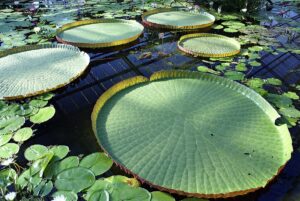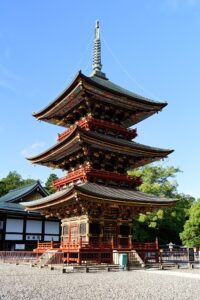Overview (history, characteristics, attractions)
Tokoname Pottery Walk is a walking route that takes you around the old pottery town of Tokoname City, Aichi Prefecture. Tokoname ware is a traditional ceramics that is counted as one of Japan's Six Ancient Kilns. The pottery industry has flourished since the Middle Ages, and from the Meiji to Taisho periods, the area developed into a pottery settlement with a forest of climbing kilns and chimneys. The charm of the Pottery Walk is that you can enjoy walking through the alleys and red brick climbing kilns that still retain the vestiges of that era, and the atmosphere of a pottery town, and you can also see many folk art-like objects such as clay pipes and beckoning cats.
Highlights
- Pottery Walking Path (Walking Path): A walking path dotted with old kiln sites, pottery shops, and workshops. You can see the atmosphere of the alleys and the remains of the pottery industry up close.
- Climbing kiln: A large historic kiln site. The red brick chimney and restored climbing kiln are popular photo spots.
- Maneki-neko Street - Ceramic Objects: There are many large and small beckoning cats and ceramic works on display, and many photogenic spots.
- Pottery experience studio: There is a workshop where you can try your hand at hand-forming, using an electric potter's wheel, painting, and more, and enjoy making one-of-a-kind pottery (reservations recommended).
- Tokoname Pottery Hall and Ceramic Museum: A facility with exhibits on the history of Tokoname ware, materials, and a sales corner. The INAX Live Museum (exhibition of tiles and architectural ceramics) is also nearby.
- Cafe Gallery: There are cafes and galleries scattered around the area that have been converted from old houses, where you can enjoy coffee and light meals served in cups.
Access (nearest station, transportation, etc.)
- RailwayThe nearest stations are Tokoname Station or Meitetsu Tokoname Station on the Meitetsu Tokoname Line and Airport Line. It takes about 30 minutes from Nagoya Station by Meitetsu Limited Express or Rapid train. It takes about 10 minutes from Chubu Centrair International Airport by Meitetsu train.
- car: Take the Isewan Expressway or Chita Peninsula Road. From central Nagoya, it takes about 40 to 60 minutes depending on traffic conditions. There are paid parking lots in the area, but the number of spaces is limited, so public transportation is recommended when it is busy.
- Bus and walking: The walking path is within walking distance from the station (a few minutes to 15 minutes depending on the route and entrance). It's easy to find your way around by referring to the tourist information center or a map.
Estimated stay (estimated time required)
- Short walk: If you just want to have a quick look around the walking trail, it will take about 30 minutes to an hour.
- Standard sightseeing: 2-3 hours including a stroll, pottery making experience (simple), and breaks at museums and cafes.
- Stay longer: If you want to experience multiple workshops and visit the INAX Live Museum, you can easily spend half a day (3-5 hours) or even a whole day there.
Nearby spots
- INAX Live Museum (Tokoname): Exhibits of tiles and architectural ceramics, as well as a wide range of historical materials. Experience programs are also available.
- Tokoname Cera Mall Ceramic Wholesale Complex: An area where mass-market pottery stores and outlets are concentrated.
- Chubu Centrair International Airport: Views inside the airport, shopping, hot spring facilities, etc. Easy to access from Tokoname and easy to combine.
- Chita Peninsula coastal area: You can enjoy coastal scenery, hot springs, and seafood on a drive.
Things to be aware of (crowds, manners, seasonal precautions, etc.)
- congestion: It gets crowded on weekends, public holidays, and consecutive holidays (Golden Week, summer vacation, long autumn holidays). If you want to stroll around quietly, we recommend weekday mornings to afternoons.
- Manners: The walking path passes through many residential areas and active workshops, so please avoid speaking loudly or smoking on the street, and do not touch the exhibits in the shops without permission. Photography is generally allowed, but please check whether it is permitted to take photos inside the workshops or on exhibits.
- Feet and steps:There are many areas with cobblestone roads, slopes, and stairs, so we recommend wearing comfortable shoes (sneakers, etc.). Be careful when it rains as it can be slippery.
- Climate and Seasons: In summer, the sun and heat can be intense, so be sure to stay hydrated, wear a hat, and take precautions against sunburn. During the rainy season, bring rain gear. Winter is relatively warm, but there can be some windy days.
- Check in advance for pottery experience: The duration and acceptance conditions (age restrictions, whether or not reservations are required) for experiences vary depending on the facility. If you have any requests, we recommend that you make a reservation/check in advance by phone or online.
―――
The Tokoname Pottery Walk is a place where you can experience its charm through "enjoyable walking." We recommend a half-day course where you can experience the history of the kilns while enjoying the pottery and local cafes. Experience the world of Tokoname ware through photography and hands-on experiences.



